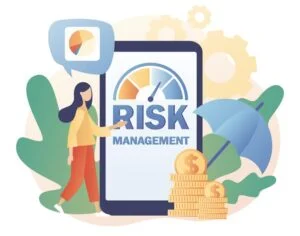Financial services went through a significant transformation with technological integration. Open banking is one of such changes in financial and banking services that occurred due to the technical wave in the past couple of decades. The banking process manages people's banking procedures through third-party involvement.
Open banking enables individuals to access banking services anytime and anywhere through appropriate APIs and an Internet connection. Financial activities always come with certain risks and threats. The tech-enabled finance management services like open banking are prone to a few unavoidable threats. In this blog, we shall discuss the top risks of open banking.
What is Open Banking?
Open banking is an API-based banking technique involving third parties other than the bank and an account holder. In this method, users allow third parties to access their banking details to make and receive payments with the incorporation of technology. There are various risks of open banking.
The role of third parties here is to offer technological support or application programming interfaces (APIs) to manage finances. Primarily, banking was different from what it is today. Any financial activity related to the bank requires an account holder to visit their bank, whether it is money withdrawal, deposit, checking balance, or anything else.
The methods have changed with the arrival of open banking tactics. Account holders can easily fulfill their banking needs with open banking in a much easier way. This technique has quickly become popular among bank account holders.
In 2023, users have done transactions worth $57 billion through open banking methods. One of the examples of open banking is the Unified Payment Interface (UPI) developed by the National Payments Corporation of India (NPCI).
Nevertheless, easier methods of tackling a challenge come with specific risks. Similarly, there are specific risks of open banking as well.
Top Risks of Open Banking:
Privacy and data security: API-based open banking incorporates third parties. All the financial information of the bank account holder, including contact details, account balance, transaction history, and passwords, are shared with third-party platforms. It makes confidential user data vulnerable, increasing the possibilities of privacy breaches, fraud, and data misuse.
Regulatory compliances: Considering the sensitivity of sharing financial information for open banking, several nations and regions have constructed various security policies for the same. Therefore, platforms offering APIs for open banking must comply with all the regulations of the regions where they allow transactions. It is one of the major risks of open banking.
Technical integration and standardization: The APIs created by the third parties must be technically strong to process transactions, support multiple platforms, maintain privacy, and comply with regulations. Standardization of the services is important for better implementation of the APIs.
Data management: Data management is one of the top risks of open banking. APIs do not limit its user number. All the bank account holders can leverage this technology. When millions of people utilize the mechanism, it generates more data to manage. Real-time data management can create challenges. Any shortcomings or weaknesses can cause latency in transactions.
Establishing trust: When it comes to financial management, people find it difficult to trust third parties. Open banking APIs are offered by external entities other than banks. Hence, the parties must possess all the users' bank account details, starting from balance to transaction history. People may feel hesitant to share their banking information with external bodies.
Wrapping Up!
Open banking is one of the prolific contributions of innovation lately. It is also called ‘one bank data’ that seeks third-party integration, allowing users to process and manage their financial transactions from a common API. It has doubtlessly influenced bank account holders to manage their banking facilities easily. However, this API-based banking facility has certain risks as well.
Many nations have partly and entirely adopted open banking as a service. The rest of the regions are considering its risks and threats before employing it. The factors mentioned above are among the most significant risks of open banking that can arise before, during, and after its total implementation. Are you seeking to stay up to date on the latest technologies? Go through our blog section and attain knowledge of tech-enabled innovations.
You may also like:
What is Connected Banking? What are the Benefits?
Open Banking: A Deep Dive into the World of Financial Innovation






